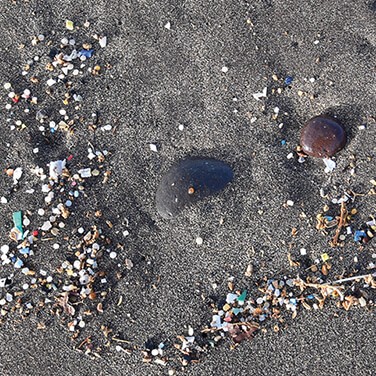Microplastics: Investigating Risk and Understanding Evidence
By Kylie Wolfe
Scientists recently found evidence of microplastics in the human body, making them pause and ask: Is this harmful? While this question requires additional research, the presence of microscopic particles in our food and water sources is a reality.
Plastic Paradise
In a society that’s slowly becoming more eco-conscious, plastic pollution continues to impact the world’s water sources. Roughly eight million metric tons reach the oceans each year, ultimately breaking into particles ranging from 100 nanometers to five millimeters in size.
According to a new pilot study, these tiny pieces have made their way into the food chain. Philipp Schwabl, a scientist and physician at the Medical University of Vienna, partnered with Bettina Liebmann, an analytical chemist at Environment Agency Austria to test stool samples from eight individuals. They found a variety of common plastics in each, this being the first study to verify that humans are, in fact, consuming microplastics.
Since the sample size was so small, researchers are hoping to widen their studies to learn whether or not these foreign fragments are damaging people’s gastrointestinal tracts.
Though microplastics are microscopic, they have hazardous potential.
Laying the Groundwork
Though microplastics are microscopic, they have hazardous potential. Not only do they contain chemicals, but they can carry contaminants, including bacteria like Escherichia coli.
To learn more, a number of organizations in Europe are beginning to fund more investigatory research efforts. An initial analysis from Science Advice for Policy by European Academies (SAPEA) totaled 173 pages and found that microplastics do not appear threatening at this time.
“Of course, a lack of evidence for risk does not mean we should assume there is no risk,” said Bart Koelmans from SAPEA. The study also noted that if pollution continues to rise at the current rate, SAPEA’s conclusion could change.
Diving Deeper
Toxicologist Heather A. Leslie from Vrije Universiteit Amsterdam is an expert in microplastics who’s concerned with the possible health impact. She suggests that shellfish could be a warning sign of the effects of said pollutants.
A study published in Environmental Science and Technology found that shellfish accrue billions of plastic particles in only a few hours, revealing a clear source of microplastics in a popular food item.
“I don’t see any evidence at present of concern for human health in eating seafood,” said Richard C. Thompson, a contributor to the study and a professor of marine biology at the University of Plymouth.
To date, scientists have found microplastics in the air, soil, and water, proposing that food packaging, in addition to litter, cosmetics, and paints, could be a source. They also note that ingesting chemicals can have a more harmful effect than if they were inhaled.
“We are still at the initial stages of understanding human exposure and what the threat may be.”
Future Exploration
As research on the topic gains traction, Schwabl hopes to raise enough money for a second round of his initial study, this time with more participants. He would like to examine if microplastics affect individual cells or the intestinal tract and whether or not there’s a tie to gastrointestinal disease.
“We are still at the initial stages of understanding human exposure and what the threat may be,” said Leslie.
To spearhead the cause, the European Chemical Industry Council (Cefic) set aside the equivalent of 680,000 USD for two studies: one to research potential hazards and the other to understand how microplastics travel in our oceans. The council received nearly triple the normal number of research applicants for these studies, showing how eager scientists are to begin exploring such an under-investigated topic.

Read More from Lab Reporter Issue 2, 2019
- Adaptive Fabric Responds to Changes in Body Temperature
- Brain Metabolism Study Reveals Age Differences Between Sexes
- Chemical Accelerators: The Glove-Related Allergen of the 21st Century
- Ductless Fume Hood Safety
- How to Choose the Right Desiccator
- How to Guard Against Cleanroom Contamination
- Microplastics: Investigating Risk and Understanding Evidence
- Protecting n-Butyllithium from Air and Moisture
- Reduce Strain with Ergonomically Certified Gloves
- Safety Compliance: A Team Effort at Texas A&M
- Save Incubator Space with Round Multilayer Devices
- Second HIV Patient in Remission After Stem Cell Transplant
- Solvent Exposure Can Lead to Hearing Loss
- TCI: Innovating to Improve Lab Safety


